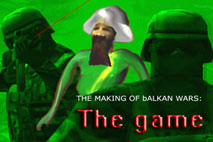The ups and downs of the Media Arts stoke market

Media arts are obscure and self-referential.
Media arts are not part of the pop culture.
Media arts are neither part of the larger contemporary art scene, e.g. Biennials, Manifestas and Documentas, although they could have been.
Media arts are not part of the art collections of IT millionaires and other rich geeks, although they are supposed to be media arts’ ‘’physical addressees’’.
‘’Hard scientists’’ keep up a pejorative attitude toward media arts.
(For more than half a century ‘hard scientists’ were pejorative toward modern art as well).
Media arts maintain problematic relationships with cultural institutions if not at all.
Media arts produce great artworks, while at the same time they are in state of precarity. Media arts are also in love with the unfinished.
Media art works should get over the fetishism of technology.
Media arts pieces, in contrast to the market oriented art scene's works, are by default experimental.
Media arts works are almost never finished; they never get dressed in the attractive sexy form of a commodity. They are mostly ugly prototypes.
Media arts are forms, in search of a form.
Very often media artists identify interactivity with cities’ structures as Singapore, San Diego, L.A, London, Shangai etc, forgetting the interactivity of other cities like Baghdad, Beirut, Kabul or the whole area of Tsetsenia.
Media arts is ‘art through media’ that highlights the ’interventionist’ and ‘cooperative’, claims with a stress on processual methods and findings.
It is highly recommended to distinguish media art from other forms of art that uses media, which continues the lineage of claiming art as defined by expression, presentation and representation. (H. Reck)

Media arts belong to a minority of art forms, that aimed for an exodus of the white cube spaces of galleries and other similar art spaces.
Media arts constitute a transitional platform allowing a hybridization of different art practices and cultural production forms, that were previously only considered as divided and isolated.
Art is no longer an art of representation but an art attached on the process of transformation. Media arts are highly aware of that and they try to articulate a critical stance. The results are ambiguous and some times incomprehensible for the big public. This is rather an ironic and oxymoron thing.
Media arts and artists, in opposition to the contemporary art scene habits, lack a certain sense of superiority and sovereignty. Media artists-with some exceptions- do not wear fancy clothes. This is a major problem because they have to impress both the scientists and the art curators.
Media arts works are often modest –though very intelligent –applications embedded into larger media structures and platforms as e.g. the social media. They re -establish the Dadaist condition of the social aesthetic virus. But due to their delicate, non –spectacular, hacktivist character, main stream users do not perceive or comprehend their function.
Very often the public confuses media arts, with artworks that use media as canvasses like e.g. video art. This misunderstanding is unfair for the media arts; video art works are institutionalized since the early 90's; they stopped questioning the media itself; they are more spectacular and as a result much more popular.
On one hand, the IT's and the geeks often accuse media arts as participatory products, ''made by users'' and not from creators or developers.
They consider them as applications that are not available for further advancement.
On the other hand, art theorists and critics believe that artworks should emit Beauty, Truth and Emotion. Therefore they insist that the place for media arts’ works is in spaces like scientific, educational institutions, or at entertainment parks.
Despite the various micro-tendencies that arise in the art scene since 80's and 90's the majority perceives contemporary art as a joke. Thus, sarcasm and irony are are its main characteristics, which perfectly fit to the market's specs. The net-art, mostly of the 90's, following this tendency fell into the trap and neglected the fact that computers are not generating narrative content and what the world needs nowadays is meaning not empty, ironic media arts (G. Lovink).
Media arts at this moment levitate between the nihilists’ impasses of the markets’ the post modern condition and the problematic funding relations maintained with the academic world. It seems as a Becketian situation that could be described as: ‘’I cannot go on I cannot step back, let’s see the continuation.. .’’
Contemporary art scene has to face the constant regeneration and re –appearance of the past as present time. On the contrary, the media arts scene has to 'put a brave face on' the persistent avalanche of the future that asserts the present.
It is about time that the media arts make clear that the conflicts within the collective unconscious of the media sphere is nothing than a tempest in a tea cup.
Labels: art scene, contemporary arts, media arts, new media





0 Comments:
Post a Comment
Subscribe to Post Comments [Atom]
<< Home